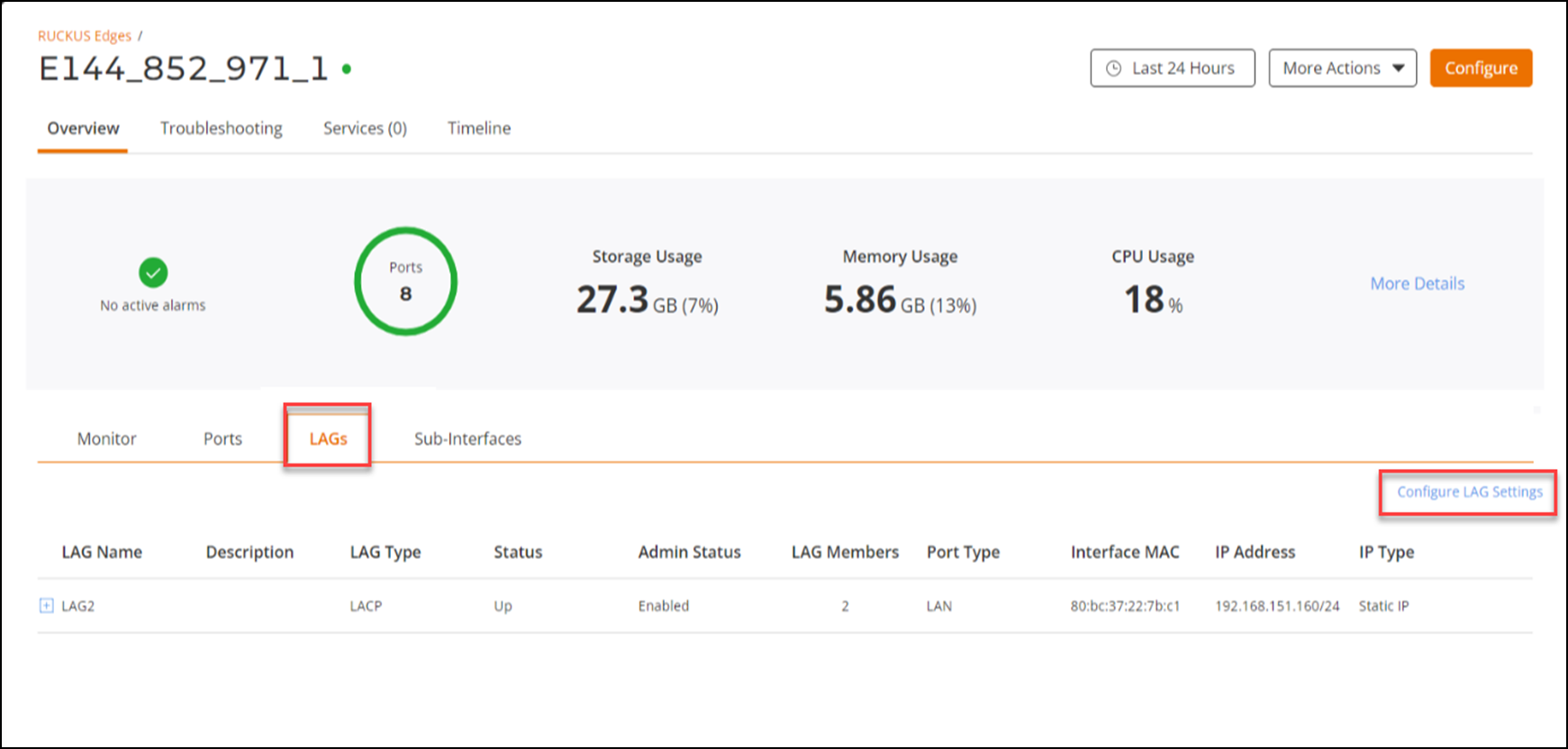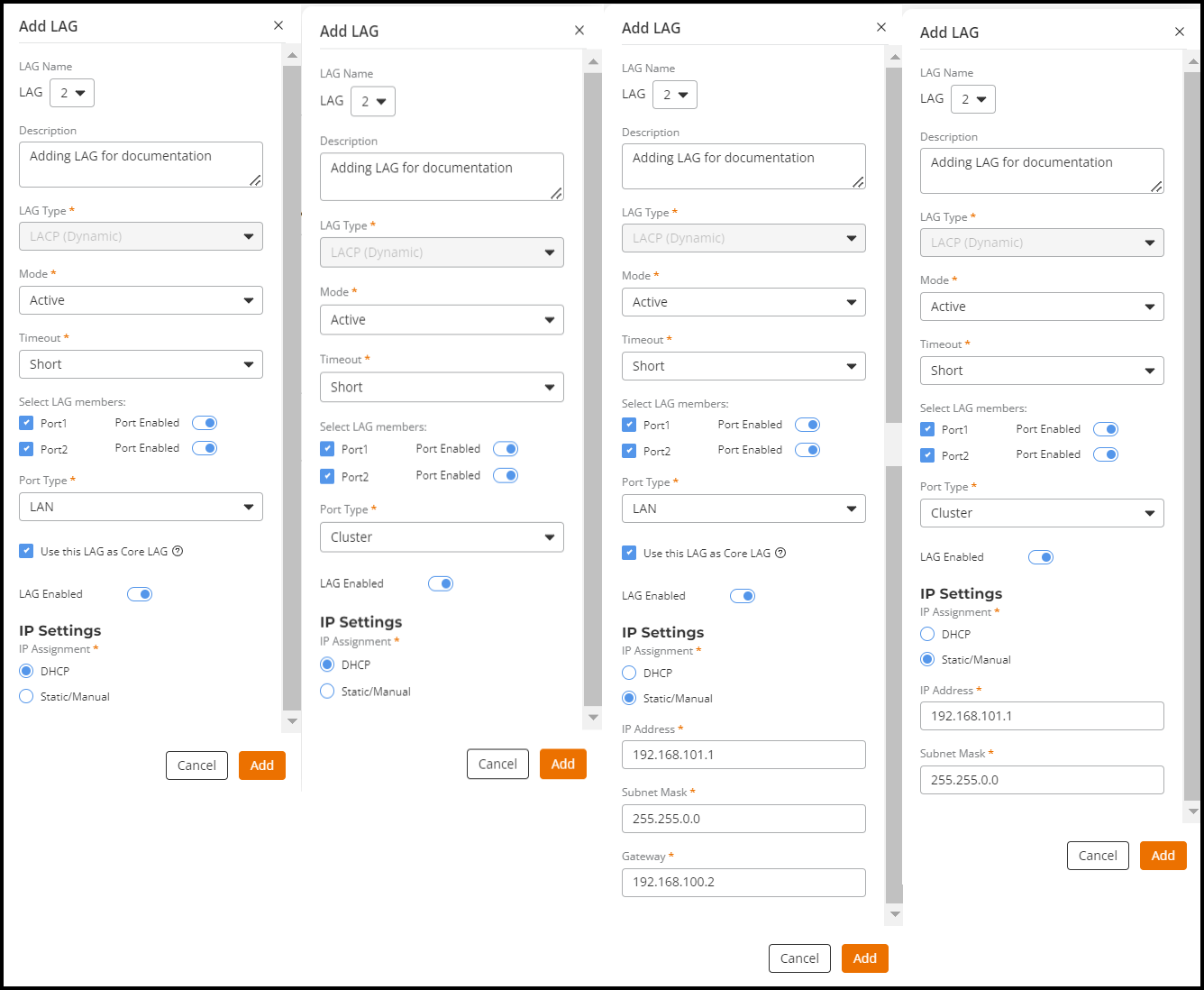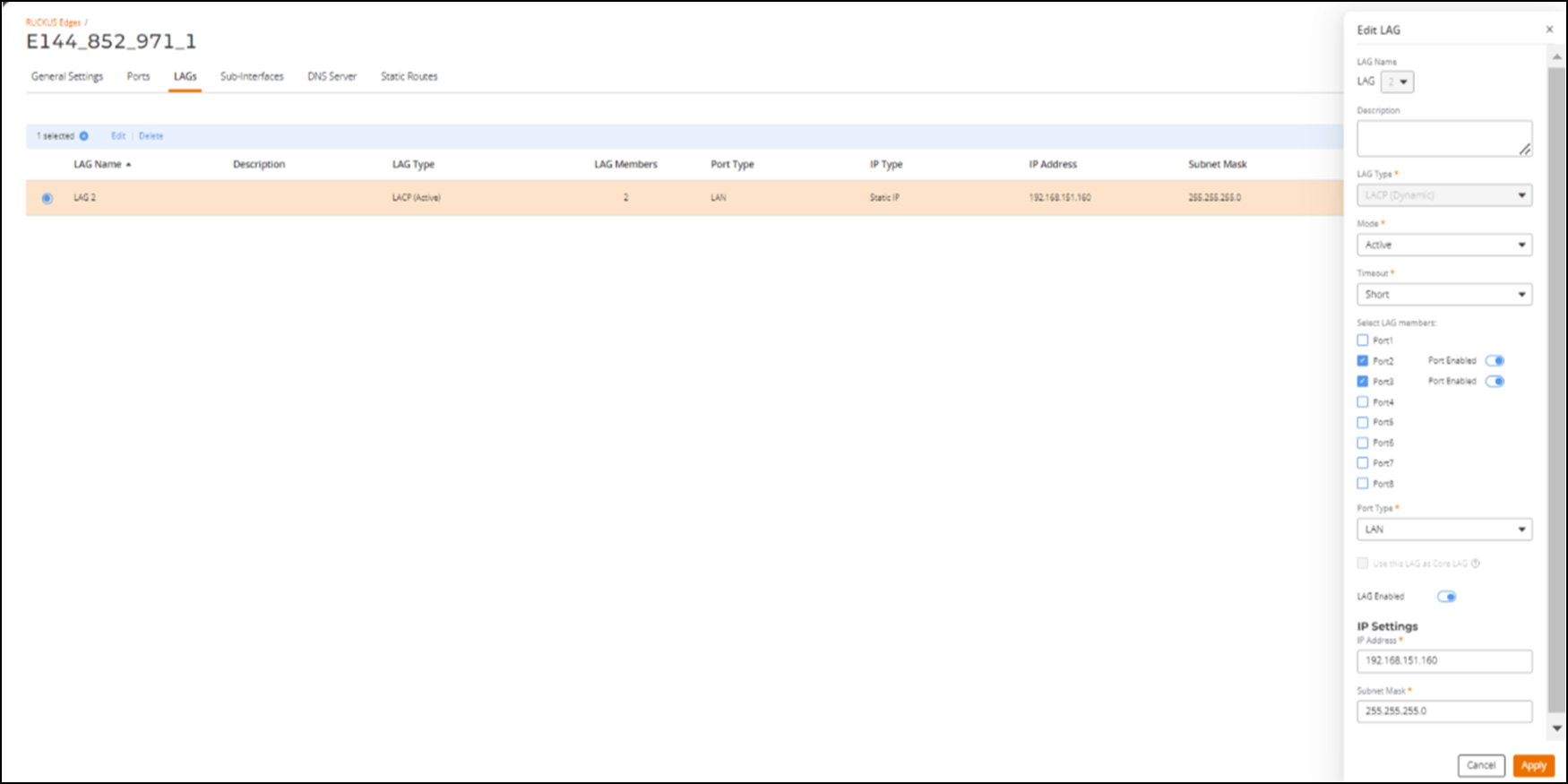Configuring a RUCKUS Edge Link Aggregation Group
To configure a Link Aggregation Group (LAG), follow these steps:
A RUCKUS Edge device or cluster of
devices must already be onboarded and in operational state.
-
On the RUCKUS One navigation
bar, click on Gateway > RUCKUS
Edge.
This displays the RUCKUS Edge devices.
-
Select a device and click the
 icon to expand and view the associated
devices.
icon to expand and view the associated
devices.
- Click on the device name. This displays the Overview page.
-
In the Overview page,
click the Configure button on upper-right hand corner and click the
LAGs
sub-tab. Alternatively, you can directly click the LAGs tab on the
Overview page and click Configure LAG
Settings.
This displays LAG details page.
LAG Configuration 
-
In the LAGs page, click
Add LAG.
This displays the Add LAG sidebar.
Add LAG 
Enter the following details to add a LAG to the RUCKUS Edge device.- LAG Name: Select name of the LAG from the drop-down list. The LAG name is a numeric value between 0 to 3. After the LAG is created, you cannot edit the LAG name.
- Description: Enter a meaningful short description about the LAG.
- LAG Type: The default type is LACP (Dynamic) as RUCKUS Edge does not support static LAG.
- Mode: Click the
drop-down list and select the mode of the LAG. There are two types of
modes:
- Active : Always initiates Link Aggregation Control Protocol (LACP) and Protocol Data Unit (PDU) to the peer. This is the default mode for RUCKUS Edge LACP LAG.
- Passive : Never initiates any LACP exchange on its own. It responds only after receiving LACP and PDU messages from the peer/partner device. Hence, both peers cannot be in passive mode. At least one of the peers should be configured in active mode.
- Timeout: Time
interval indicates how long the LACP should wait before declaring the
partner as down. This interval also defines the rate at which LACP hello
packets are exchanged among the peers. There are two types of
timeout.
- Long/Slow Timeout: The value of this timeout is 90 seconds. Hello packets are transmitted every 30 seconds. After 3 misses (3*30s = 90 seconds), the peer information is flushed and LACP state is declared as down.
- Short/Fast Timeout: The value of this timeout is 3 seconds. Hello packets are transmitted every 1 second. After 3 misses (3*1s = 3 seconds), the peer information is flushed. This is the default timeout for RUCKUS Edge LACP LAG.
- Select LAG
Members: A physical port associated with a LAG interface is a
LAG member. To associate LAG members, select the ports which need to be
a member of a LAG and enter the following details:
- Port Type -
Select the type of port from the drop-down list.
- LAN: If LAN is selected as the port type, Use this LAG as Core LAG is activated for SD-LAN service.
- Cluster: Select Cluster to connect two RUCKUS Edge devices for clustering in a High Availability (HA) deployment.
- Port Type -
Select the type of port from the drop-down list.
- IP Settings:
Select one of the following for IP
Assignment.
- DHCP - Dynamic Host Configuration Protocol (DHCP) is a client or server protocol that automatically provides and Internet Protocol (IP) with its host IP address.
- Static/Manual - Enter the IP address, Subnet Mask, and Gateway Protocol manually.
Add LAG - Examples of IP Settings Options 
-
After entering all the details,
click Add.
The newly created LAG port is displayed in the RUCKUS Edge page under LAGs tab. You can also view the LAG information in the RUCKUS Edge Overview page.
New LAG with Port Information 